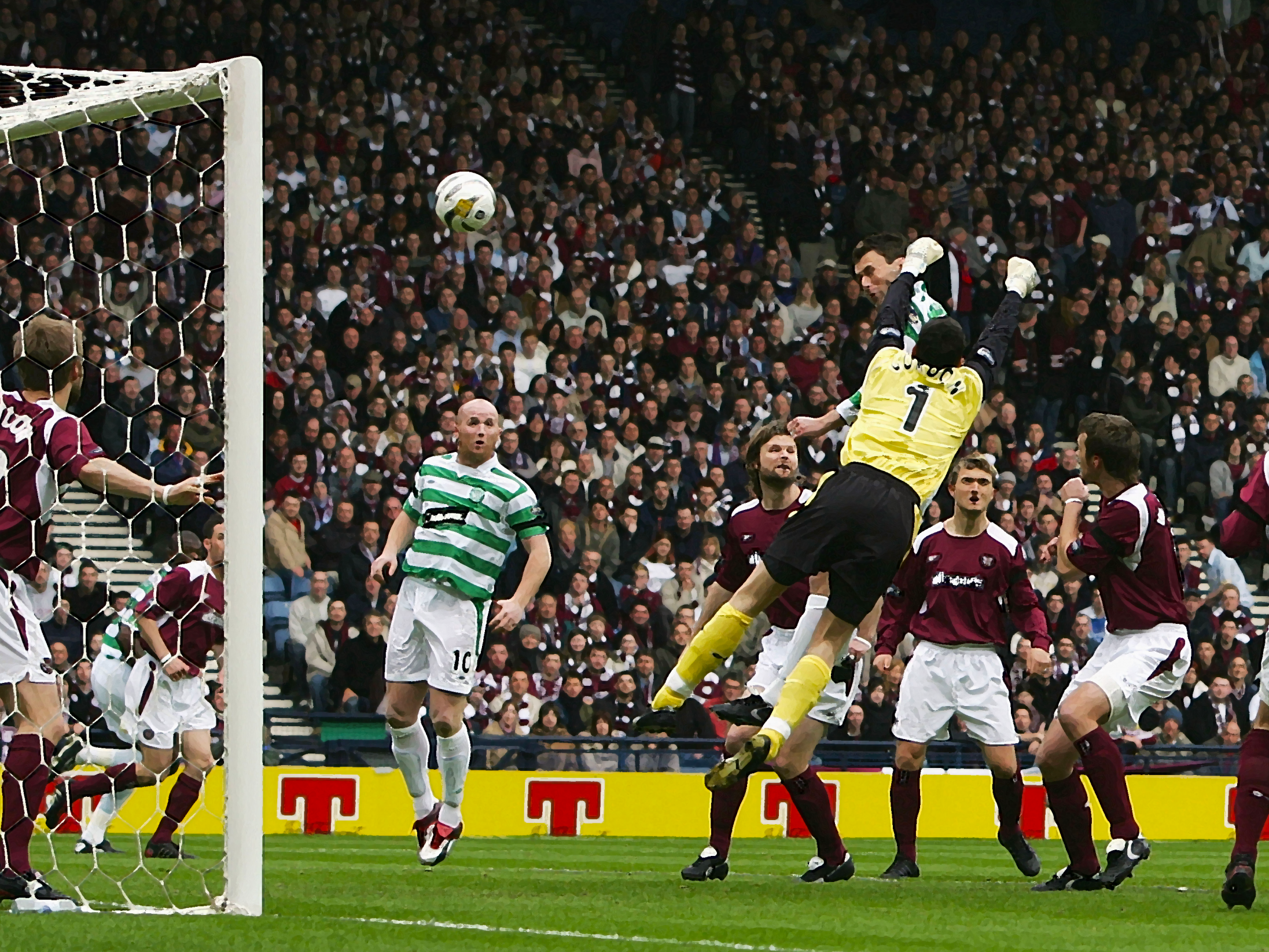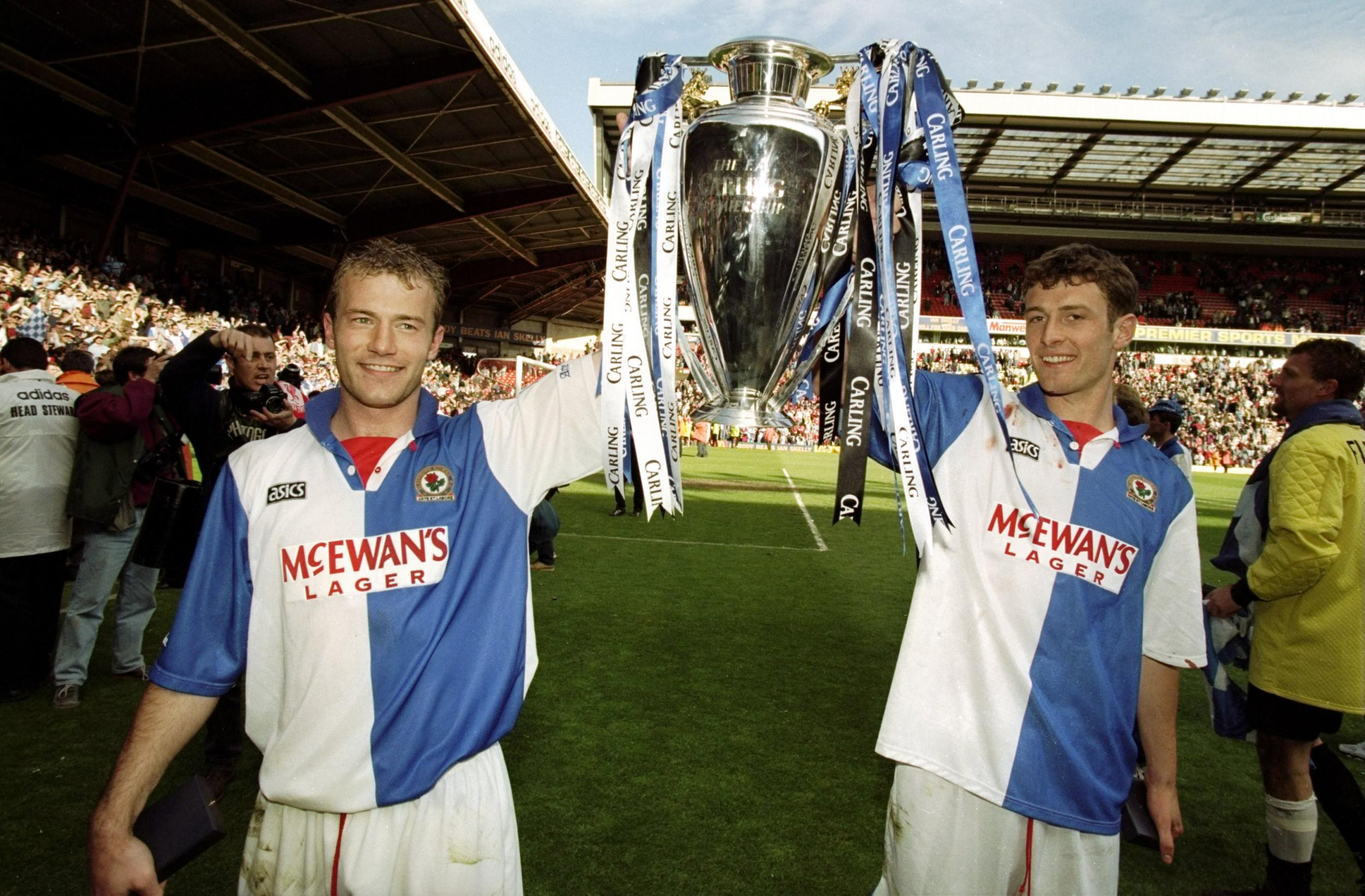The fading art of headed goals: Chris Sutton on his greatest weapon and Premier League ‘snobbery’
In the latest instalment of our series, one of the Premier League’s greatest aerial threats discusses why headers are dwindling as a source of goals at the top of the game

At the beginning of the last decade, almost 20 per cent of Premier League goals were headed. Since then, except for a brief resurgence in the 2014-15 season when it leapt from 15 per cent to 18 per cent, the percentage of goals from headers has tumbled steadily.
After 22 rounds of fixtures in the 2019-20 campaign, only 80 of the Premier League’s 591 total goals have been scored with headers, a new nadir of just 13.54 per cent.
Reigning champions Manchester City are the Premier League’s highest scorers at present, but headers account for only six of their 62 goals (9.68 per cent). Runaway leaders Liverpool, thanks in large part to the unrivalled crossing of full-backs Trent Alexander-Arnold and Andrew Robertson, are keeping the headed goal on life support (11 headers from 50 total goals; 22 per cent), but the downward trend across the board can’t be ignored.
“I feel it’s part of the game that there’s a bit of snobbery about,” former England striker Chris Sutton tells The Independent. “When sides go direct, it’s ‘not the right thing to do’. But it’s a legitimate weapon, an important tool that I’m surprised more sides don’t exploit.”
Headers were certainly a potent part of Sutton’s arsenal during his 16-year top-flight career. Throughout spells with Norwich City, Chelsea, Celtic and a Premier League triumph with Blackburn Rovers, the 6ft 3ins centre-forward was renowned for the power and accuracy of his heading.
With a strong leap, well-developed neck muscles and precise timing, Sutton’s aerial abilities made him a constant threat in the opposition’s penalty area. And the remarkable range from which he could land powerful headers on target brought him solace in one of the most difficult periods of his career.
“There was probably a bit of anger in that header as much as anything because I’d had a pretty feeble start and it wasn’t anybody else’s fault but myself,” Sutton says, remembering his first and only league goal for Chelsea following a £10m move from Blackburn in 1999. The second goal of a 5-0 thrashing of Manchester United saw Sutton float high above Phil Neville to meet a drifting Albert Ferrer cross from the right and drive a powerful header beyond goalkeeper Massimo Taibi from 15 yards out.
“With that particular one, it was a bit of a thrust and it went back towards the top corner. I remember I scored one from the edge of the box for Norwich City against QPR, and one against Leeds, back across the keeper.”
When it comes to perfecting the art of heading for goal, Sutton believes the split-seconds before the ball arrives are crucial. The attacking player must be able to evaluate the trajectory and speed of the cross and instantly determine their approach.
“Getting your body in position, your body shape before you head the ball, is important,” he explains. “And timing is everything.
“When balls are hammered across and the pace is on the ball, you’re looking to glance the ball, but you really have to concentrate on getting in the right position at the right time to get the perfect connection to get it to where you want it to go. When the pace isn’t on the ball, you have to generate your own power, and that’s with the neck, manoeuvring, trying to force it down or, if you’re beyond the far post, trying to go back across the keeper.”

Famously forming half of a strike duo with Alan Shearer labelled the “SAS” at Blackburn, Sutton’s heading ability was employed to create chances for others as much as it was to pepper the goal. Whether contesting flick-ons from long balls or nodding crosses down for an on-rushing colleague, the deftness and accuracy of his heading was an underestimated creative tool.
“I played with Efan Ekoku at Norwich who was very quick,” Sutton says. “I enjoyed playing with him because I was not very quick myself. You knew that you didn’t have to be exact with flick-ons with him because he was so quick he could take two or three yards off a defender. It was just about hitting an area.
“If it’s a looped ball, it’s nearly impossible to beat a keeper at the near post if you have to generate your own pace on the ball. Sometimes the best option is to loop it back over him into the far corner. You’re hoping that, even if you don’t score, other people are attacking. The good strikers anticipate those situations.”
Sutton also gained a unique appreciation for aerial play thanks to time spent as a centre-back in the Norwich youth team and reserves as a teenager, a role he would occasionally reprise in later years.
“As a centre-half, I’d go for anything,” Sutton recalls. “I hadn’t played centre-half, ever, before I signed for Norwich. I learned, through the youth-team coach, to lift my left arm to protect me from getting smashed in my face. It’s a very baby-steps thing, but I was used to just attacking crosses and getting my head on it. Once I’d been playing centre-half and I’d taken a few knocks, I used to practise by taking a couple of steps with my arm already up and then jumping.”
Although the best headers of the ball tend to possess athletic and physical gifts which give them an advantage over their opponents, Sutton firmly believes mastery of the right techniques and timing can only be achieved through relentless practise. And his earliest coaching came from his father, Mike, a former professional footballer who played for Norwich, Chester and Carlisle.
“We’d have an empty goal and he’d cross balls in from the left, from the right, from different angles,” Sutton says. “It takes a long time but it’s the repetition.
“My view is everybody has a favourite side they head the ball from, so it’s about trying to get to the position where you feel comfortable heading the ball from both sides. A ball coming in from the right-hand side, I always felt I could head naturally; from the left side, that was alien to me. That’s why the practise becomes really important, training the brain from a young age. You just get better and better. It takes weeks, months, years to develop.
“It’s a boring thing to say, but practise is everything. Then in game time, it just comes, it just happens. The more you practise, the luckier you get.”

Join our commenting forum
Join thought-provoking conversations, follow other Independent readers and see their replies
Comments